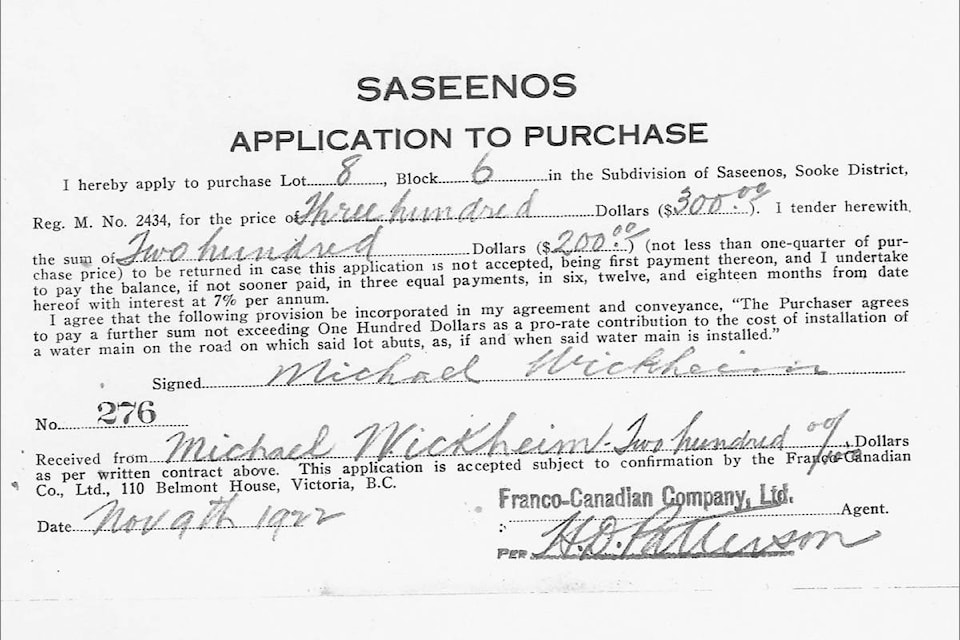By Elida Peers | Contributed
With all the attention now on property values and assessments, it may be a bit of a surprise to see what the selling price was for a local four-acre property in 1922.
The “offer to purchase”, pictured here, of Lot 8, Block 6, Plan 2434, in the Subdivision of Saseenos, Sooke Land District, for $300 was accepted, and that’s where my parents, immigrants from Norway, settled in November 1922.
The name Lannan is significant to this story; the property above is dissected by Lannan Creek, which drains from the uplands of Saseenos, emptying into Sooke Basin near Parkland Road.
Early in the last century, the Lannan family lived on the waterfront, their house a bit east of Billings Spit.
The dad ran cattle throughout the area, and grew oats in unfenced open spaces such as where the two little shops stand on the highway in Saseenos. While Mama Lannan kept the household running, helped by her seven boys all attending Sooke School and giving a hand with the chores, it wasn’t enough.
When they could not put together enough cash to pay their property taxes, the Lannans left the community, re-settling in Sidney. Following their loss, the Franco-Canadian Company, based in Vancouver, acquired the land reaching from Coopers Cove to Sooke Indian Reserve No. 1, through tax sales.
Victoria realtor Alfred Carmichael was commissioned by the company to subdivide and market the 1,000-acre stretch of land, with the first sale taking place in 1921. Lots along the waterfront went for higher prices, ie. small lots where the Lannan house had stood went for as much as $1,000. Lots on that sunny Saseenos hillside where oats had once been harvested were offered for as much as $1,800.00.
The Wickheim purchase shown in the illustration bordered on the Canadian National Railway Line, now the Galloping Goose Trail. Purchasers of the uplands acreages of the subdivision were typically immigrant settlers hoping for a better life, while waterfront lots were just as likely to be purchased by retired diplomats and others with more comfortable means.
•••
Elida Peers is the historian of Sooke Region Museum.
